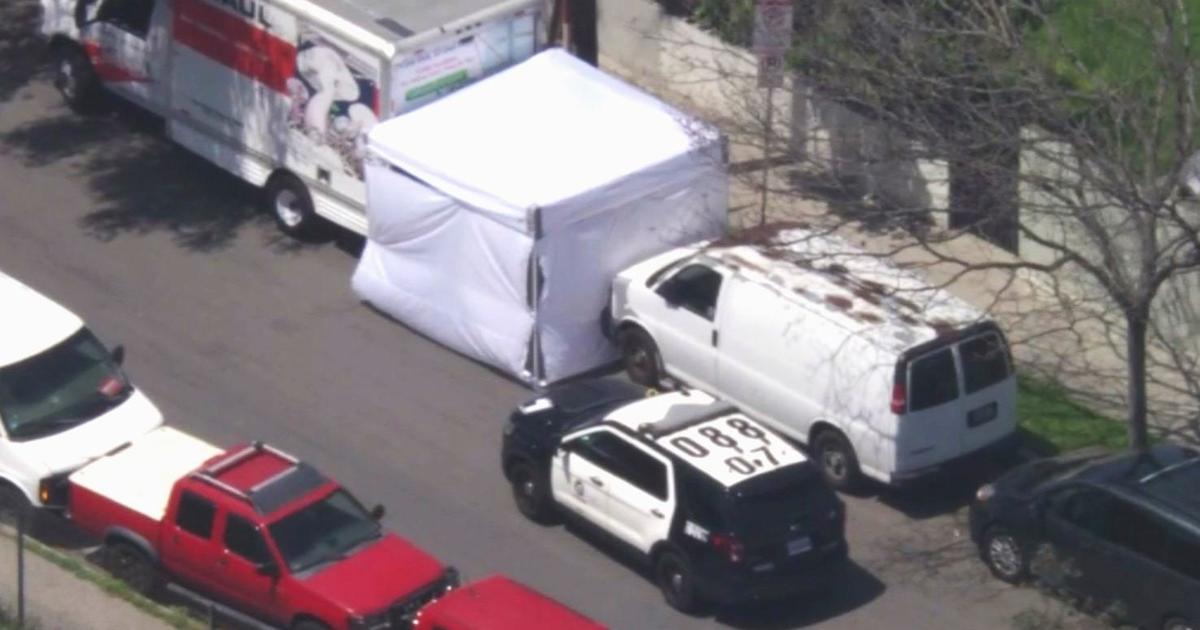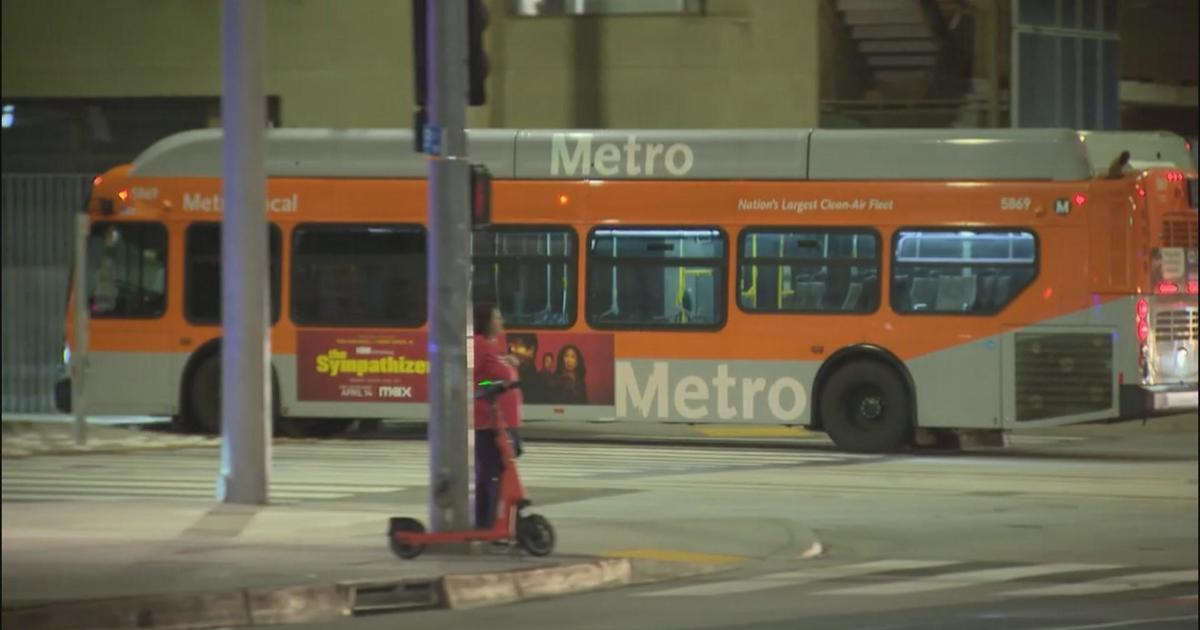Cracks Found In 3 More Southwest Planes
YUMA, Ariz. (AP) — Inspectors have found small, subsurface cracks in three more Southwest Airlines planes that are similar to the cracks that caused a jetliner to lose pressure and make a harrowing emergency landing in Arizona, the airline said Sunday.
Southwest said in statement that two of its Boeing 737-700s had cracks and will be evaluated and repaired before they are returned to service. A National Transportation Safety Board member told The Associated Press later Sunday that a third plane had been found
with cracks developing.
The cracks found in the three planes developed in two lines of riveted joints that run the length of the aircraft.
Nineteen other Boeing 737-300 planes inspected using a special test developed by the manufacturer showed no problems and will be returned to service. Checks on the nearly 60 other jets are expected to be completed by late Tuesday, the airline said.
That means flight cancelations will likely continue until the planes are back in the air. About 600 flights in all were canceled over the weekend.
NTSB board member Robert Sumwalt said Boeing was developing a "service bulletin" for all 737-300 models with comparable flight cycle time as the Arizona jet, which was 15 years old and had about 39,000 takeoff and landing cycles.
There are 931 such models in service worldwide, 288 of which in the U.S. fleet.
Boeing's bulletin would strongly suggest extensive checks of two lines of "lap joints" that run the length of the fuselage. The NTSB has not mandated the checks.
Friday's flight carrying 118 people rapidly lost cabin pressure after the Boeing 737-300's fuselage ruptured -- causing a 5-foot-long tear -- just after takeoff from Phoenix.
Passengers recalled tense minutes after the hole ruptured overhead with a blast and they fumbled frantically for oxygen masks. Pilots made a controlled descent from 34,400 feet into a southwestern Arizona military base.
No one was seriously injured.
The tear along a riveted "lap joint" near the roof of the plane above the midsection shows evidence of extensive cracking that hadn't been discovered during routine maintenance before Friday's flight -- and probably wouldn't have been unless mechanics had specifically looked for it, officials said.
"What we saw with Flight 812 was a new and unknown issue," Mike Van de Ven, Southwest executive vice president and chief operating officer, said. "Prior to the event regarding Flight 812, we were in compliance with the FAA-mandated and Boeing-recommended structural inspection requirements for that aircraft."
Boeing did not immediately return messages left Sunday.
National Transportation Safety Board investigators were in Yuma to oversee the removal of the top section of the jetliner's roof around the tear. The structure will be sent to Washington, D.C., for analysis.
NTSB board member Robert Sumwalt said that the rip was a foot wide, and that it started along a joint where two sections of the 737's skin are riveted together. An examination showed extensive pre-existing damage along the entire tear.
But Sumwalt noted that the extensive cracking, known in the industry as "multi-site damage," could not have been spotted during routine maintenance.
The NTSB could issue urgent recommendations for inspections on other 737s if investigators decide there is a problem that has been overlooked. The type of riveted joint involved is not normally subjected to extensive checks for wear or fatigue.
Federal records show cracks were found and repaired a year ago in the frame of the same Southwest plane.
An Associated Press review of Federal Aviation Administration records of maintenance problems for the 15-year-old plane showed that a March 2010 inspection found 10 instances of cracking in the aircraft frame, which is part of the fuselage, and another 11 instances of cracked stringer clips, which help hold the plane's skin on.
The records show the cracking was either repaired or the damaged parts replaced. Cracking accounted for a majority of the 28 problem reports filed as a result of that inspection.
It's common for fuselage cracks to be found during inspections of aging planes, especially during scheduled heavy-maintenance checks in which planes are taken apart so that inspectors can see into areas not normally visible.
The jetliner had gone through about 39,000 cycles of pressurizing, generally a count of takeoffs and landings. Cracks can develop from the constant cycle of pressurizing for flight, then releasing the pressure. Southwest officials said the Arizona plane had undergone all inspections required by the FAA. They said the plane was given a routine inspection Tuesday and underwent its last so-called heavy check, a more costly and extensive overhaul, in March 2010.
The decompression happened about 18 1/2 minutes after takeoff from Phoenix Sky Harbor International Airport after the pilots reached their cruising altitude. They immediately donned their oxygen masks, declared an emergency and briefly considered returning to Phoenix before the cabin crew told them of the extent of the damage, Sumwalt said.
"They discussed landing in Phoenix, but quickly upon getting the assessment decided to divert to Yuma because it was the closest suitable airport," he said.
The plane's voice and data recorders were being examined in Washington, and Sumwalt said they worked well and showed no sign of a problem before the incident.
Southwest operates about 170 of the 737-300s in its fleet of about 540 planes, but it replaced the aluminum skin on many of the 300s in recent years, a spokeswoman said. The planes that were grounded Saturday have not had their skin replaced.
A total of 288 Boeing 737-300s currently operate in the U.S. fleet, and 931 operate worldwide, according to the FAA. It declined to say if it was requiring other operators to check their aircraft for similar flaws.
Southwest said "based on this incident and the additional findings, we expect further action from Boeing and the FAA for operators of the 737-300 fleet worldwide."
A similar incident happened in July 2009 when a football-sized hole opened up in-flight in the fuselage of another of Southwest's Boeing 737s, depressurizing the cabin. Sumwalt said the two incidents appeared to be unrelated.
For more information on possible flight delays and cancellations and to check your flight status, go to Southwest.com.
(© Copyright 2011 The Associated Press. All Rights Reserved. This material may not be published, broadcast, rewritten or redistributed.)



